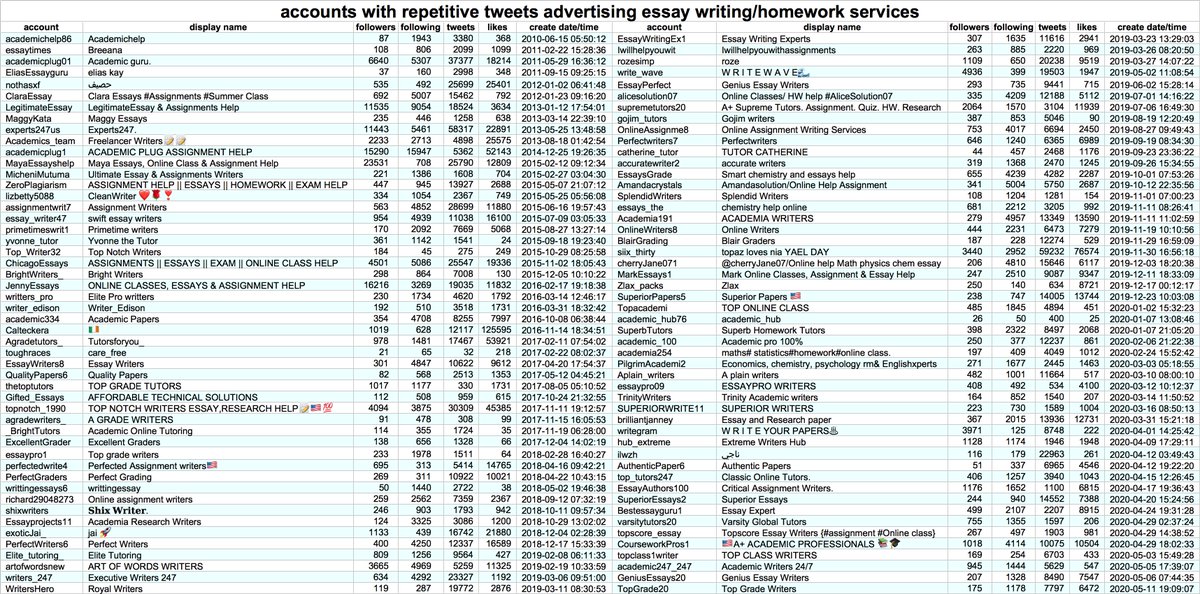Do you want to pay complete strangers on the Internet (whose qualifications and skills you know nothing about) to do your homework for you? There's a spam network for that. #FridayFeeling
cc: @ZellaQuixote
cc: @ZellaQuixote

By searching for the repeated "Hire us to do your <list of homework topics>" tweets shown in the previous collage and exploring the networks of the resulting accounts, we found 300 accounts posting repetitive tweets offering homework/essay writing services for hire. 





The accounts in the network (allegedly) send the majority of their tweets via the Twitter Android app, although a number of other apps show up as well. Most tweets are either original tweets or replies (very few retweets or quote tweets). 



The original tweets and replies posted by this network are highly repetitive, with the same tweets and replies duplicated dozens or hundreds of times across many accounts. The repeated tweets are all offers to do other people's homework assignments in exchange for payment. 

The accounts in this network primarily post their spammy replies to tweets containing words like "essay", "assignment", and "homework". They reply quickly, with the median time between the original tweet and the reply being just over two minutes (129.1 seconds, to be precise). 





These accounts don't retweet much, and when they do retweet they're usually retweeting each other's spam - 172 of the 300 accounts have retweeted or been retweeted by other members of the network within their last 3200 tweets. 

The homework/essay writing services spammers also follow each other profusely, with 264 of the 300 accounts having a follow connection with at least one (and usually many) of the other homework spammers. 

• • •
Missing some Tweet in this thread? You can try to
force a refresh































